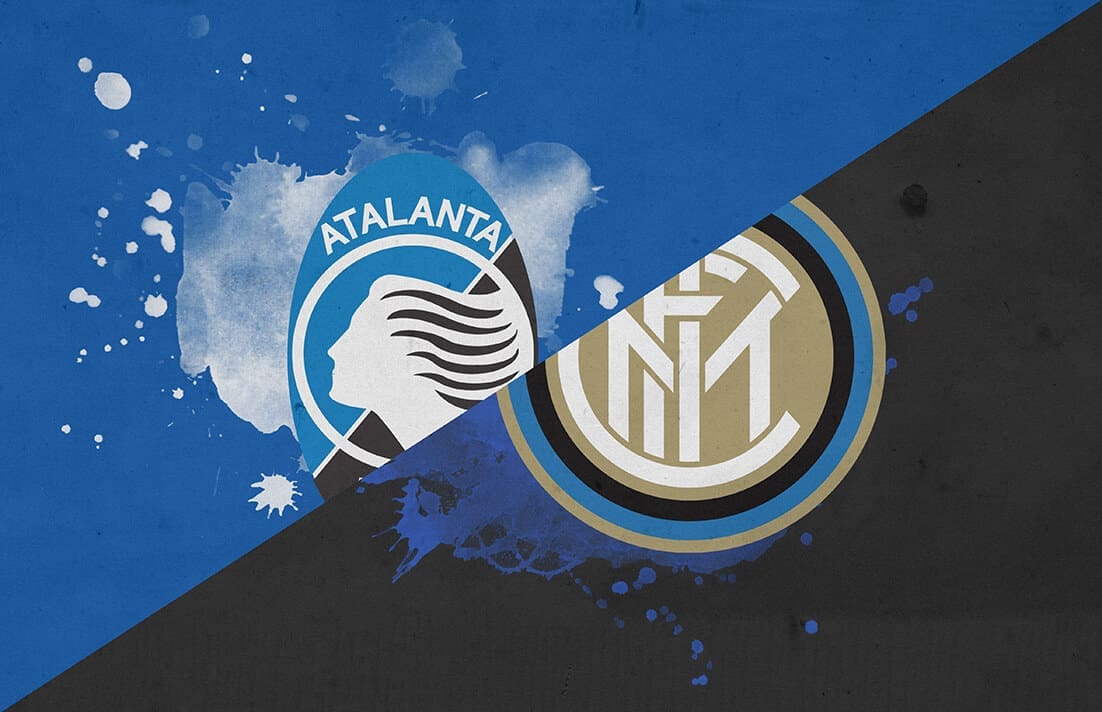This post originally featured on our comprehensive Serie A analysis sister site, serieaanalysis.com.
Atalanta’s start to the season raised many questions on whether Gasperini’s comments of complaint on the club’s transfer window after his side’s elimination from the Europa League qualifiers had somehow influenced the players’ confidence. In fact, from the 20th of August to the 21st of October, Atalanta failed to win a single game out of the nine played, losing five and drawing four. Worrying results from a team which, despite the negative results, had played well in most of the games, yet, at the same time, comforting, as eventually “La Dea” would have likely turned the dire streak around. This is what happened, as Gasperini’s side won their four following matches since their undeserved defeat to Sampdoria. Given the fact that Inter were on a hot streak as well, on the back of seven consecutive wins in Serie A, the premises of a great game were all in place.
Inter’s dysfunctionalities at the back favour Atalanta
Atalanta started off the game with their usual intensity and man-oriented press out of possession, disrupting any attempt from the visitors to build-up, and forcing Inter into long-balls to the forwards; this basically meant a loss of possession given the numerical superiority the home side had at the back, due to the wingers remaining deep. Spalletti’s side even tried to contest the 2nd balls, however, the aforementioned positioning of the wide men prevented the nerazzurri from having a correct structure in transition to do so.

Atalanta’s man orientations. The wing-backs pressed the full-backs from an initial deep position to achieve numerical superiority on the last line.
Atalanta’s wide connections through rhombi enable them to have a strong support around the ball and options to advance past pressure and up the field, while obliging the opponents to alter their defending ways in order not to leave La Dea’s players with too much time on the ball or free in space. In his The intention probably was to put the recipient of the centre-backs’ first pass of each build-up under immediate pressure, without stretching the team’s horizontal lines like a hypothetical commitment of the centre-midfielder would have done, unlocking a passing lane to the advanced midfielders in the half-space. The full-backs’ aggressiveness exposed an even more important area in Atalanta’s game, though: space behind said players. Inter’s defensive strategy was to congest the ball-side by shifting with the ball-near players, however, Atalanta was able to bypass the visitor’s lines with relative ease due to rotations that opened space in and around their structure.
As the components of the build-up rhombi rotate and attack free space immediately after having played a pass to provide progressive passing options, this dysfunctionality in Inter’s backline gave them an ideal context to develop their attacking play. Often, Zapata, the tip of the rhombus, would occupy the area ahead of D’Ambrosio, making him the Italians’ closest option and therefore forcing him to stay on the Colombian so as to not leave him free, or involve Skriniar in sudden changes of men. Atalanta’s centre-forward was thus able to manipulate the full-back out of position with his dropping movements, opening the channel behind him for Gosens’ overlaps.
These suboptimal pressing duties ended up isolating Skriniar against Zapata on multiple occasions, as well as the #10s (Ilicic and Gomes, who dynamically found and occupied pockets of space), which had consequences on the entire backline, as they were compelled to shift in order to stay compact, exposing the far side to the wing-backs’ blind-side runs.

Asamoah steps out to press Hateboer, freeing the space behind him and isolating Miranda against Ilicic.
Even when on the same vertical line as Skriniar, Zapata often dropped to attract the Slovak with him and forcing D’Ambrosio to tuck inside to cover the former’s space. This allowed Atalanta’s wing-backs to carry the ball and cross uncontested, having time and space to make the best decisions.
Different box occupations, different effectiveness
An impressive aspect of Atalanta’s attacking play was their penalty area occupation, which made them a threat whenever the wide men had a chance to cross. The 18-yard box was constantly occupied by at least three players who’s movements enabled them to use the space at their disposal at best, and usually get a touch on the ball every time a cross came in. One player attacked the near post, another one made a central run, while the third attacked the back post. Atalanta’s first goal is a perfect example and execution of the situation described above. At times, a fourth player held his run to be an option for a cut-back, creating a very difficult situation for the defenders. Moreover, to maintain stability and control over counters, two players (Freuler and De Roon) stayed at the edge of the box in the rebound zone, allowing the home side to recover possession immediately through counter-pressing or win second balls.

Atalanta’s perfect box occupation on Hateboer’s goal. Papu Gomez on the near post, Zapata central and Hateboer on the back post whilst De Roon and Freuler (out of frame) occupy the rebound zone. Furthermore, Ilicic holds his run to make himself available for a cut-back.
Conversely, Inter displayed the opposite, with just Icardi, and at best, the ball-far winger, on the receiving end of crosses. This has been a recurrent problem throughout the season for Spalletti’s men, and it’s what hasn’t allowed them to capitalize on chances in many situations, due to numerical inferiority which nullified the effect of the threat posed by their (many) crosses.
Conclusion
In the second half, Inter immediately drew from a penalty. The psychological effect it had on Inter was immediate, and the substitution which saw Borja Valero replace Vecino made Inter’s early control possible. Whilst with the Uruguayan on the field, Inter had resorted to an overly direct approach that only favoured Atalanta’s strategy, the Spaniard added the necessary technical quality and associativity to attempt to build-up more patiently and impose their dominance. Even off the ball, the nerazzurri pressed with more intensity, and the improved pressing was exactly what lead to Berisha’s poor pass, just before Mancini’s handball that awarded Inter a needed penalty twenty seconds into the second half. Atalanta’s 2-1 lead came just when Inter had started to gain control of the match.

Inter’s man-oriented pressing
A deserved lead and 4-1 win considering the dominant first-half display and overall performance demonstrated by the Expected Goals (3.55 xG for Atalanta and 0.50 xG collected by Spalletti’s men).
Gasperini seems to have found solutions to the teams’ difficulties in the start of the season, such as a not-always great box occupation which tended to waste most of Atalanta’s chances in the final third, over-relying on Zapata’s aerial qualities. Ilicic being back to form always is a big factor in the improved performances, as a fit Ilicic adds technical quality and creativity to an otherwise predictable attack.
Spalletti, instead, exposed his central midfielders lack of press resistance and directness against a stronger opponent than Genoa, whilst showing Borja Valero’s importance to Inter’s build-up, taking some burden off of Brozovic.
Gasperini has had his revenge on his former side yet again, and the dominant way he achieved it will have made the victory even more satisfying.






Comments